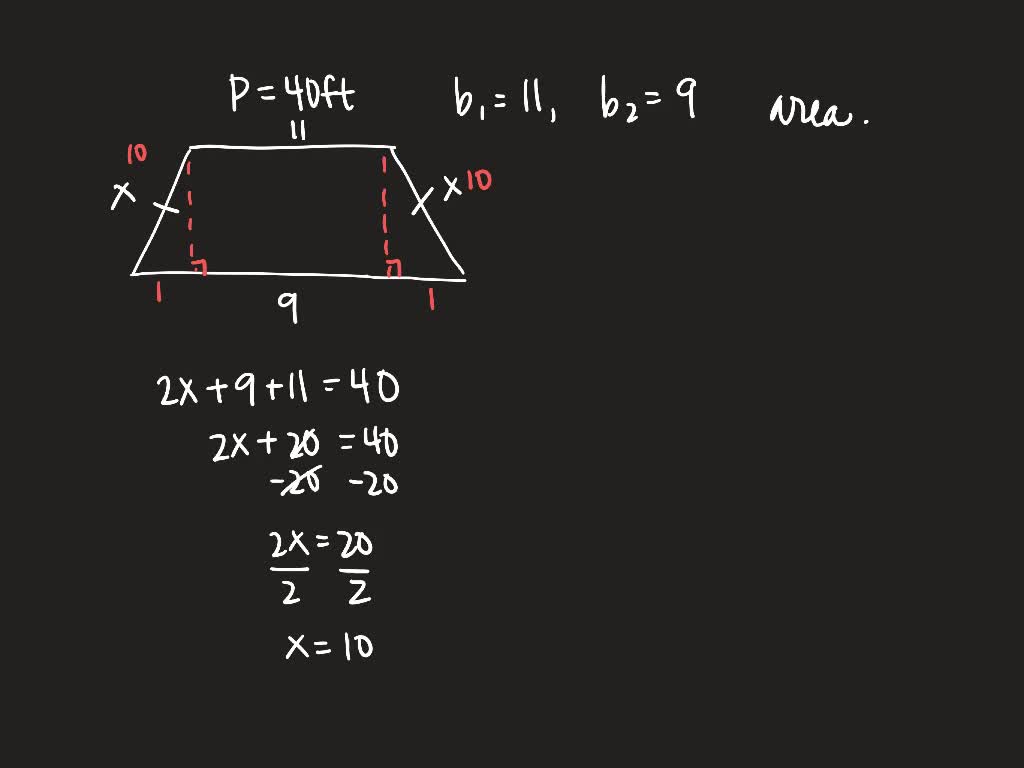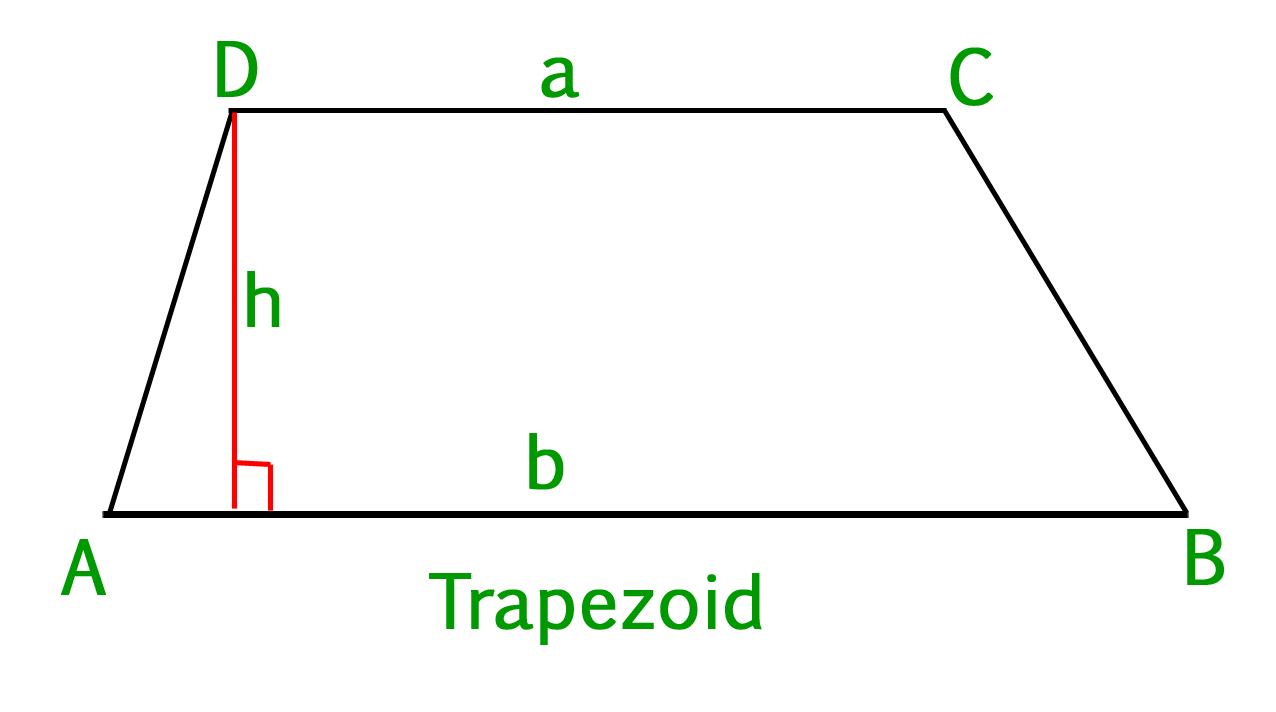

The height of the trapezoid, which is the distance between the bases, is four units:įor area, we don’t need the measurements of the two legs, just the two bases and the height, which can also be called the altitude. Our bottom base, base 2, is 11 units longs. Because our sample problem is on a graph, we can see that the top base, which we’ll call base 1, is three units long. Note that dividing the sum of the bases by two is the average of those lengths. The formula for finding the area of a trapezoid is \(A=h(\frac)\). But what if we don’t have graph paper or a conveniently sized trapezoid? That’s why we need a formula! Trapezoid Area Formula
Isosceles trapezoid area full#
There are 24 full squares plus eight half squares, which means the area of the trapezoid is 28 square units. How many squares are inside our trapezoid? Remember that area is a measure of how many square units will fit inside a shape. That’s all there is to it! Let’s move on to area. The area of a trapezoid is half the product of the perpendicular distance between parallel sides and the sum of. Let’s go ahead and find the perimeter of this trapezoid: It is a 2-dimensional plane geometric figure. We don’t need to remember this formula though, because just like with every other type of polygon, it’s just a fancy way of saying add all of the sides together! (ii) Area of an isosceles trapezoid (A) Area of the rectangle +. Trapezoid Perimeter Formulaįor a trapezoid, the formula for perimeter is \(P=b_1+b_2+l_1+l_2\). Let d be the diagonal and h the height of the isosceles trapezoid as shown in the fig above. For instance, if we wanted to build a fence around a trapezoid-shaped yard, we’d need to know the perimeter of the yard to know how much fencing to buy. The perimeter is the distance around an object. When we know the lengths of the legs and the lengths of the bases we can find the perimeter of the trapezoid. Here, we can see the top and bottom are parallel because of the matching arrows on those sides. We can tell which sides are the bases because they are parallel to each other. There are two types of sides in a trapezoid: legs and bases. In the next section, we will discuss different types of a trapezoid.Hi, and welcome to this video on finding the area and perimeter of a trapezoid! What is a Trapezoid?Ī trapezoid is a four-sided polygon, or “quadrilateral,” that has at least one set of parallel sides. The following equation will be true for this trapezoid: Suppose there is a trapezoid with sides a, b, c, and d and its diagonals are p and q.The point of concurrency of the diagonals of the trapezoid is collinear to the midpoints of two opposite sides.The median of the trapezoid will be parallel to the bases and its length will be equal to the average of the length of its bases.The diagonals and base angles of an isosceles trapezoid are equal.Some of the important properties of the trapezoid are given below: Like other geometrical figures, trapezoids have their unique properties that set them apart from other figures. In the next section, we will discuss certain properties of the trapezoid. A quadrilateral is a figure having four sides. Hence, we can say that a trapezoid is a type of quadrilateral. However, the first school of thought does not consider a parallelogram a trapezoid. If the argument of the second school is accepted then we can say that a parallelogram is also a trapezoid because it has more than one pair of parallel sides. On the other hand, the other school argues that a trapezoid can have more than one pair of parallel sides. One school says that a trapezoid has only one pair of parallel sides. There are two schools of thought on the definition of the trapezoid or trapezium. The shape of the trapezoid resembles that of a square, rectangle, and parallelogram. An altitude of a trapezoid refers to the distance between two parallel sides. On the other hand, the legs or lateral sides of the trapezoids are those sides that are non-parallel.

The bases of trapezoids are the sides that are parallel to each other. These two-dimensional figures cover some areas and have their perimeters. Trapezoids, also known as a trapezium, are four-sided geometrical figures.

The quadrilateral having two parallel sides is known as a trapezoid Before discussing the types and properties of trapezoids, first, let us define a trapezoid.
Isosceles trapezoid area how to#
In this article, we will discuss what are trapezoids, their properties, different types, and how to calculate their area and perimeter.


 0 kommentar(er)
0 kommentar(er)
